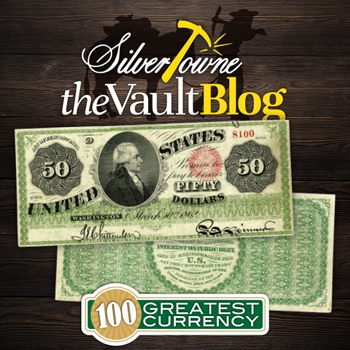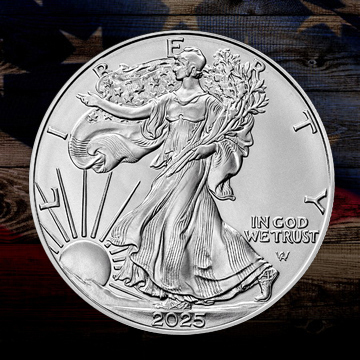
Several notes ranked in Whitman Publishing’s 100 Greatest American Currency Notes Series feature a Founding Father whose reputation endured long after he was gone. Authors Q. David Bowers and David M. Sundman help us break down one of those notes while giving us some insight on the man at the center of them all.
#97 – Acts of 1862 and 1863 $50 Legal Tender Note
The $50 Legal Tender Notes of 1862 and 1863 feature none other than Alexander Hamilton who has been on the face of several 100 Greatest ranked entries, including 32, 38, 74, 75, 80, 82, and 88. These $50 notes have the greenback style filled with engravings and were made in First Obligation and Second Obligation styles, referring to the intaglio print. Less than 50 examples are known to exist today.
Hamilton was born on the Caribbean Island of Nevis in 1755. He became a distinguished figure in the federal government early on in his career and was eventually appointed as the first secretary of the U.S. Treasury during President George Washington’s service. He served until 1795 and remained a consultant to the president afterwards.
Although known mostly for his contributions to the government, he would receive much backlash for his involvement in elections and the influence he would attempt to create on their outcomes. He would also gain some attention for his pistol duel with fellow political figure and foe, Aaron Burr, in which he was wounded. From these happenings his reputation would slip, especially after his secret dealings with Mexico became public knowledge. When he died, his image was that of a “despicable man,” according to authors Bowers and Sundman.
Despite his past afflictions, Hamilton is still well known in the U.S. history books for his contributions under Washington’s presidency. His financial planning abilities would land him on many faces, but most notably and recognizably in today’s climate on the $10 bill.
The $50 Legal Tender Notes of 1862 and 1863 in a Choice Crisp Uncirculated condition in 1960 was valued at $650. By this publication (2006), it increased to $280,000.







